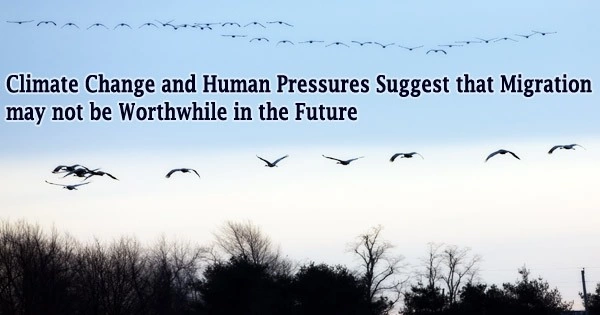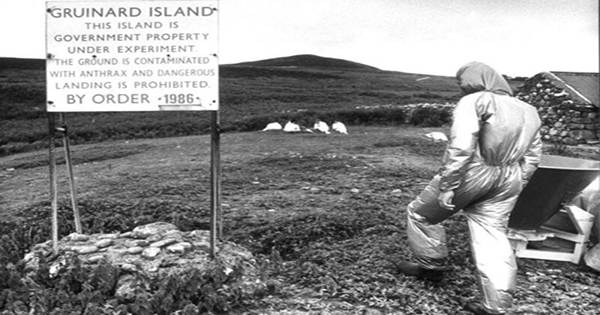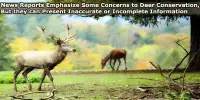According to scientists writing in Trends in Ecology & Evolution, animals that migrate north to reproduce are at risk from continued climate change and growing human pressure, losing previous benefits for migration, dropping in number, and faring significantly worse than their resident counterparts.
Many creatures, including mammals, birds, and insects, travel great distances to reproduce in the north. They do this to take advantage of the seasonally abundant food supply, lower parasite and disease populations, and comparatively lower predator activity.
Scientists from the University of Bath were part of an international research team that discovered climate change and rising human pressure have significantly reduced these advantages and, in many cases, increased mortality among migratory animals.
Reduced incentives for long-distance migration could have detrimental effects on the structure and operation of ecosystems, the researchers warn.
They highlighted 25 recent studies that discussed how various terrestrial animals, such as caribou, shorebirds, and Monarch butterflies, which travel over 1000 km in the summer to breed in north temperate and arctic regions before returning south in the winter, are finding that migration is becoming less profitable.
However, the researchers claim that for many communities, this is no longer the case. Traveling such large distances is incredibly expensive in terms of energy, but the advantages of food availability, fewer diseases, and predators meant the benefits surpassed the cost.
However, migratory animals are hardwired to resume the perilous journey each year to breed, despite the fact that there is little advantage. Some animals may extend their breeding grounds a little further north to adapt for the change in environmental conditions.
Animal migration from equatorial regions to the North temperate and the Arctic is one of the largest movements of biomass in the world. But with reduced profitability of migration behaviour and smaller number of offspring joining the population, the negative trend will continue and fewer and fewer individuals will be returning back to the North.
Professor Tamás Székely
Dr. Vojt?ch Kubelka, the leading author and former Visiting Researcher at the University of Bath’s Milner Centre for Evolution, said:
“These findings are alarming. We have lived with the notion that northern breeding grounds represent safe harbours for migratory animals. On the contrary, numerous Arctic and North temperate sites may now represent ecological traps or even worse degraded environments for diverse migratory animals, including shorebirds, caribou or butterflies.”
Food availability and resources in the North may not be climatically compatible with migratory animal reproduction, resulting in greater offspring mortality, as observed for many migrating birds.
Additionally, new parasites and viruses are spreading throughout the Arctic, adding to the pressures already there. Top predators are also becoming more adept at raiding nests and stealing eggs and chicks before they have a chance to hatch.
Dr. Kubelka said: “Lemmings and voles used to be the main food source for predators such as foxes in the Arctic, however the milder winters can cause rain to fall on snow and then re-freeze, preventing the lemmings from reaching their food. With fewer lemmings and voles to feed on, foxes eat the eggs and chicks of migratory birds instead.”
“We’ve seen that rates of nest predation of Arctic migratory shorebirds has tripled over the last 70 years, in large part due to climate change.”
The authors argue that in addition to well-known issues at stopover sites and wintering grounds of migratory species, breeding grounds in the Arctic and northern temperate regions require significant conservation attention.
In addition to the specific conservation measures, the authors suggest a straightforward framework for mapping the stressors for migratory animals across space and time. This framework will make it easier to distinguish between suitable, naturally improved or protected habitats on the one hand, and ecological traps or degraded environments with diminished or eroded benefits for migratory behavior on the other.
Dr. Kubelka said: “The recognition of emerging threats and the proposed framework of migration profitability classification will help to identify the most endangered populations and regions, enabling the implementation of suitable conservation measures.”
Professor Tamás Székely, Royal Society Wolfson Research Merit Award holder at the University of Bath’s Milner Centre for Evolution, said:
“Animal migration from equatorial regions to the North temperate and the Arctic is one of the largest movements of biomass in the world. But with reduced profitability of migration behaviour and smaller number of offspring joining the population, the negative trend will continue and fewer and fewer individuals will be returning back to the North.”
“The Earth is a complex ecosystem changes in migration profitability affect populations of migrating animals which precipitate in alterations of species composition, trophic food webs as well as the whole ecosystem functioning.”
“These patterns are particularly threatening for migratory animals as large numbers of those species are already negatively affected outside the breeding period, at their stopover sites and wintering grounds and many have formerly relied on the northern latitudes to provide relative safe breeding grounds.”
Professor Rob Freckleton, from the School of Ecology and Evolutionary Biology at the University of Sheffield, said:
“Our review highlights that there are possible threats to migratory species. There is a need for more research, and our article highlights solutions are really difficult because of the large areas involved.”
















